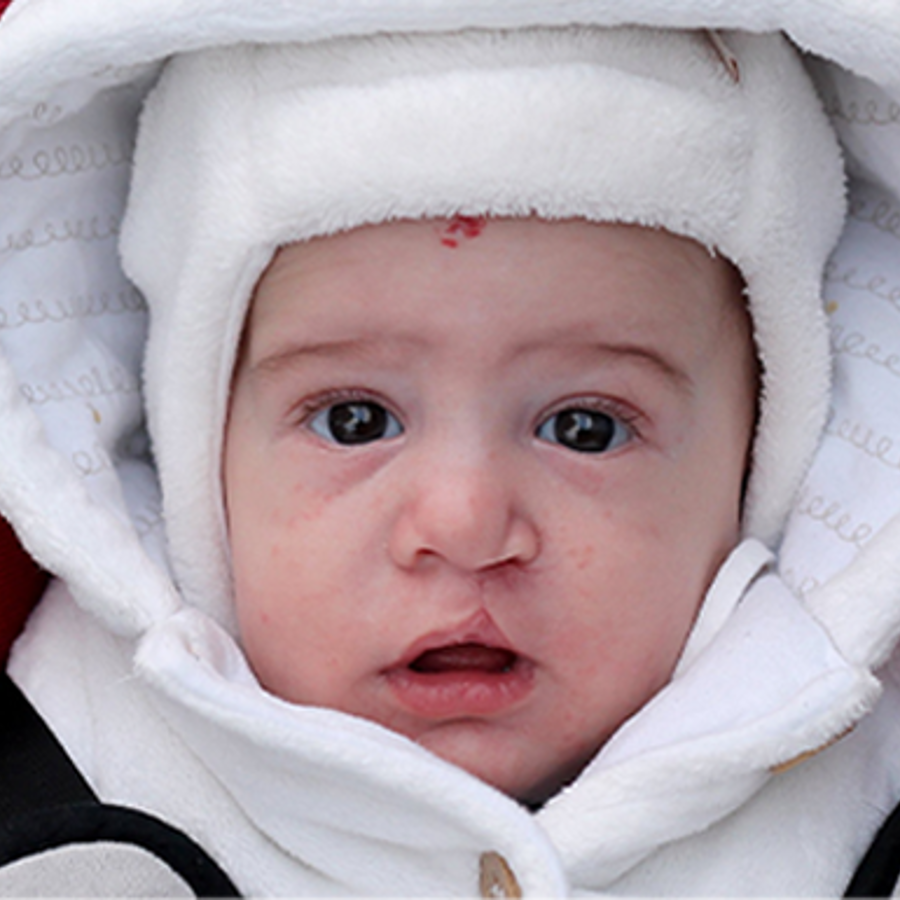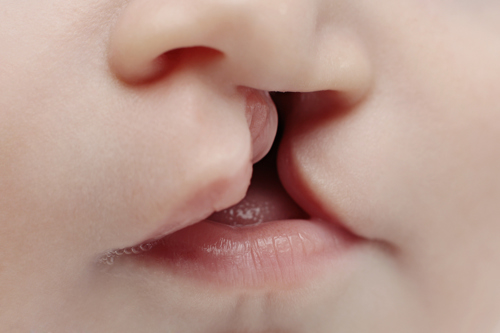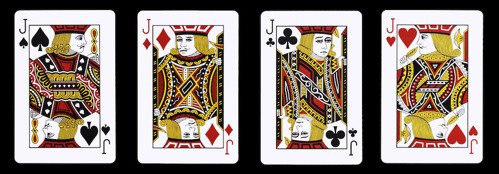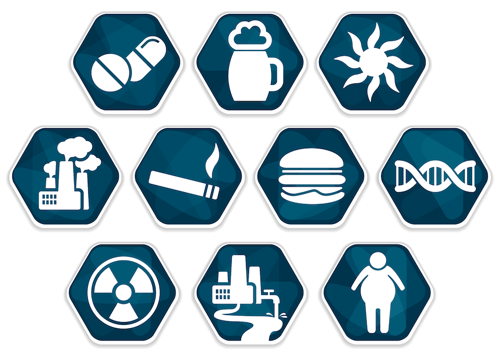
Is there a genetic test for cleft lip?
June 30, 2011

- Related Topics:
- Genetic testing,
- Complex traits,
- Developmental biology,
- Genetic conditions,
- Environmental influence
A curious adult from Canada asks:
"I was wondering how someone would go about getting a genetic test necessary to figure out the percentage chance of me passing the cleft lip I was born with onto any kids that I may have?"
Unfortunately, there isn't a genetic test yet for cleft lip. This is because we don't understand its genetics well enough to make one. And since the causes of cleft lip are very complex, we might never be able to.
Cleft lip happens when a lip does not develop normally. And when the roof of the mouth does not develop normally, it is called cleft palate. A cleft lip can happen by itself or along with a cleft palate.
People usually study cleft lip and palate together. So for the rest of the article, I'll refer to them both as one condition.
On average, about 1 out of every 700 babies born has cleft lip and palate. In a subset of cases, a cleft lip and palate are accompanied by other symptoms, usually depending on the underlying cause of the clefting.

Our DNA can affect whether or not we have cleft lip and palate. Because of this, someone with cleft lip and palate is a bit more likely to have a first-degree relative (like a child or sibling) that also has cleft lip or palate. The chance of a child having cleft lip or palate if one of its parents has clefting is between 2-8%.
But genes aren't the whole story. A person's environment can also play a role. It too, affects the chance that a person will have a child with clefting. These environmental factors are a big reason why we may never end up with a useful genetic test.
As I said, though, genes do play an important role. What I'll do for the rest of the answer is focus on genes and disease to see why cleft lip and palate is so complex. And why coming up with a genetic test would be so tricky.
You and Your Genes
Genes, which are contained in your DNA, give the instructions for making you. For instance, one gene might control what hair color you have and another gene might control your eye color.
All humans have the same genes. But genes can have different types, or varieties – just like suits in a deck of cards.
Imagine that Jacks from a deck of cards control eye color. What actually determines the color of your eyes is the suit of the Jack.
So maybe if you have a Jack of spades, you have brown eyes. And if you have a Jack of hearts, you have blue or maybe green eyes. And so on.

Of course, genes aren't cards. But they work similarly. There is an eye color gene called OCA2 that comes in different versions. One version leads to brown eyes and another leads to green or blue.
But traits aren't the only thing genes control. They can control diseases, too.
Some diseases are controlled by just one gene. This would be like having the disease if you have a Jack of hearts, and not having the disease if you have a Jack of clubs, spades, or diamonds. For a simple disease like this, there is an easy genetic test – seeing if a person has the Jack of hearts.
But, cleft lip and palate (like many traits and diseases) is not that simple. Lots of genes control whether you'll get it or not. It is the combination of all of these types of genes that determine whether or not a person ends up with cleft lip or palate.
Genes and Cleft Lip and Palate
Like I said, cleft lip and palate depend on lots of genes. So, it's not just the suit of the Jack that matters – instead, cleft lip and palate depend on the suits of a bunch of cards.
Let's say we're playing poker, and we have in our hand an 8, 9, 10, Jack, and Queen. It's like having cleft palate if all of these cards are hearts. If one of them were a club, we wouldn't have a straight flush – and we wouldn't get the condition.
Unfortunately, the exact card hand that leads to cleft lip and palate is not known. Since we don't know which cards to look for in a person's hand, there is no genetic test for the condition.
And it gets even more complicated. There might not be just one card hand that leads to cleft lip and palate. There could be lots of complicated card hands that cause the condition.
Environment and Cleft Lip and Palate
Genes are not the only things that affect whether or not someone has cleft lip or palate. As I mentioned, a person's environment also plays a role.
Having the right card hand does not always mean that a person will get the disease. In other words, it's as if your genetic card hand makes you more or less likely to end up with cleft lip. Then, something in the environment might trigger the condition.

Let's say you're playing a card game, and you have a pretty good hand – a straight flush of an 8, 9, 10, Jack, and Queen of hearts. If the people that you're playing with all had worse card hands, you'd win! But if someone had a better hand than you, you'd lose the game.
So, the cards in your hand don't tell the whole story. Whether or not you win the game also depends on the cards the other players have, how good the other players are, how well you shuffled the deck, and even whether or not the other players have cheated. It depends on the environment of the card game you're in.
Same thing with cleft palate. For example, if a mother smokes, her child might be more likely to win the card game -- to be more likely to get cleft lip and palate. But even if her child has the right card hand, if the mother doesn't smoke, her child might not get cleft lip. A child's risk of getting cleft lip could also increase if the mother takes other substances, like valproic acid (used in treating seizures). There may be other factors in the environment that are important too.
I bet you think it couldn't get more complicated – but it does. Some of these environmental factors actually depend on the types of genes that a person has. And even on genes that aren't directly related to the disease.
Let's say a person doesn't have a straight flush. Instead, they have a 2, 8, 9, 10, and Jack of hearts. This would normally mean that they don't have a cleft lip.
But what if something in the environment makes the 2 of hearts "wild?" If it becomes wild, it could be any card. Then the person would have a straight flush and a cleft lip.
A mother smoking could make the 2 of hearts wild. So if a person with a 2, 8, 9, 10, and Jack of hearts has a mother who smokes, they would develop cleft lip. But what about someone with a 2 of clubs instead of hearts? Since 2's of clubs aren't wild, this person, with a different set of genes, would not develop a cleft lip because of their mother smoking.
This is called a "gene by environment interaction." Sometimes something in the environment can only affect people with certain types of genes. Others aren't affected by it. This stuff makes understanding cleft lip and palate especially complicated.
Looking Ahead
Though there is not yet a genetic test for cleft lip and palate, scientists are trying to better understand the condition. This may help scientists figure out how it happens, and maybe help prevent some cases of cleft lip.
But remember: the disease is very complex. Even if they figure out the genes involved, they still might not be able to come up with a genetic test that can predict whether someone will pass cleft lip or palate on to their children.

Author: Julie Granka
When this answer was published in 2011, Julie was a Ph.D. candidate in the Department of Biology, studying inferring historical processes from genetic data in Marc Feldman's laboratory. Julie wrote this answer while participating in the Stanford at The Tech program.
 Skip Navigation
Skip Navigation
